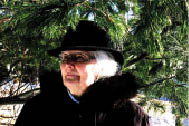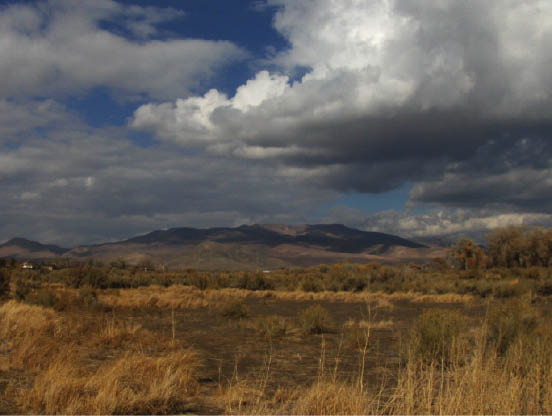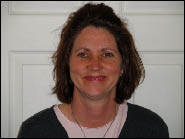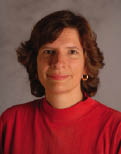Thoreau's Legacy (8 page)
Authors: Richard Hayes

An Appalachian Idyll
Lillian Heldreth
I STAND ON AN ANCIENT MOUNTAIN IN THE AFTERNOON of the day and the year, when long, low rays of sun shine through the forest’s leaves. The atmosphere itself seems full of light in every possible shade of gold and green. The quality of this light, passing through these trees I have known for over sixty years, defines my personal idea of the word “glory.”
But coal, the original source of global warming, threatens to destroy my home and countless places like it more quickly than the actual rise in temperature will. Companies brag that “clean coal” can foster a greener environment plus energy independence. But the cheapest way to get coal is by removing mountaintops.
So each time I come here I sense the peril hanging over this place on a crest of Crooked Ridge in West Virginia. The surface of this land has belonged to my family for at least five generations and possibly more.
During my own seventy years, except for trees that might fall on the house, we’ve let this hundred acres grow up in native species—hickory, tulip poplar, maple, black gum, oak, beech, black walnut, and hemlock. I keep turning down offers to buy our timber, which is valuable ecologically and equally precious for its beauty.
To me, as to my father,
each growing tree
is a living sculpture,
its form determined by the mountain’s myriad microclimates and the infinite patterns of forest light. The hundred-year-old black oak in our front yard spreads an umbrella of arms; in deep forest, its sisters grow straight up.
The trees provide their own background music. We arrived the other night in the middle of a lively argument of katydids in quadraphonic chorus. The next night a barred owl checked in with its “who cooks for you?” call.
“Gronk!” cry the ravens as they ride the morning thermals, and a pair of hawks cry “kee-yer,” circling the ridge around midday. A pileated woodpecker has tried to fool me into thinking it’s a flicker, but I have learned to distinguish its lower call. Sometimes the flicker drums on our metal roof—a wake-up call you can’t ignore.
I want to pass these sights and sounds to my sons and grandchildren as a refuge for their spirits, as they have been for mine. But we don’t own the mineral rights. Any day it chooses, a company can come and push our house, our trees, the very bones of the hills, down into the hollows, flattening Crooked Ridge, burying Brackens Creek, wasting the timber, which they don’t even bother to harvest, and destroying at least ten homes on our ridge and in the valley below.
When I was a child, I thought this mountain was “forever.” Now I am old. I do not know if the mountain and the trees will outlive me. I can only breathe to the sky my hope that I will stand here again in this glow of evening light.

Lillian Marks Heldreth
is a professor emeritus of English and Native American studies at Northern Michigan University. Born and raised in the mountains of West Virginia, which she still frequently visits, she lives in Marquette, Michigan, on the south shore of Lake Superior.
The Carson Range
Betty Owen
Looking east from the mountains, you see a vast expanse of desert sagebrush and scrub, with a few clusters of piñon pine but none of the thick stands of conifers found at higher elevations. Some may see the desert as colorless and drab, but to me it is a
uniquely beautiful place.
I have lived here for almost twenty years and have watched the diminishing mountain snow pack, the long droughts, and the dropping water levels in the lakes.

Betty Owen
, who will celebrate her eighty-seventh birthday this year, lives in Carson City, Nevada. She is a widow, mother, grandparent, painter, and avid recorder of her nature walks.

The Carson Range of the Sierra Nevada. Photo by Betty Owen.
Bloomington Canyon
Helen Whitaker
THE BEAUTIFUL MOUNTAIN AREAS OF THE BEAR LAKE Valley in southern Idaho have been my second home since early childhood. The old-growth pine forest of Bloomington Canyon, in particular, with its diverse plant and animal life, has been my nature lab. When I was growing up, the weather patterns and climate conditions remained fairly consistent from one season to the next. People could pretty much count on heavy snowfalls in winter, cold rains in spring and fall, and relatively mild temperatures in summer. Ever since the 1880s, when the area was settled by pioneers, there had not been a dramatic climate change that altered the lives of the canyon creatures and plants, and rarely did a weather event dramatically affect the area. All through the 1970s and early 1980s, when I was exploring the canyon on horseback, the weather patterns and climate conditions remained constant. One main landmark was an ancient Engelmann spruce tree, which scientists had estimated to be more than two thousand years old. I could always count on seeing that majestic beauty towering over the other trees as if surveying its domain.
In the mid to late ’80s, however, the western United States moved into a drought cycle, and ten years into the drought, the weather in Bloomington Canyon changed drastically. There was very little snow during the winters, little to no rainfall in the spring and fall, and the dry, hot summers were 10 to 15 degrees warmer than I had ever known them to be. Water sources for plants and animals were drying up. Trees were dying and beavers were moving out of the canyon, but logging continued, just as it had since the days of the pioneers. I didn’t see how this forest could sustain itself under the drought conditions and continuous logging.
The severity of the situation manifested itself on June 3, 1998, when a microburst hit the area where the Engelmann spruce stood. Within a few minutes this tree and others, totaling 2 million board feet of lumber, had been felled. In the years since then, the climate of that area has remained much hotter and dryer than it was before the 1980s, and logging is still going on. The old-growth pine forest is giving way to the younger quaking aspens that took root where the pines used to be. How much more will the makeup of this canyon change as logging (which contributes to global warming) and the drought continue?
The canyon my daughter knows is
very different
from the canyon I knew at her age.
What will it be like when her children are growing up? I can only pray that nature will find a way to sustain itself in this beautiful place.

Helen Whitaker
was born and raised in Salt Lake City. She now lives in rural Lehi, Utah, and works as a paralegal.
Prairie Pothole Wonder
Dorothy Boorse
ON A BRIGHT JUNE DAY I STAND AMID THE SHARP
edges of the rice cutgrass, looking over a prairie pothole wetland. Circles of sedge, cattails, smartweed, and water plantain rim a puddle of muddy water. Green hues wash over me. I breathe the air, hear the call of the red-winged blackbird and the faint popping sounds of trapped air bubbles escaping from mud in the heat. Insects buzz, a goldfinch flicks by. A trickle of sweat on my temple evaporates in the breeze. The beauty of this day and this place stops me in my tracks. It is a holy moment, a moment of prayer.
Nothing is more
glorious than this wetland,
this summer day,
the joy of being allowed to do this research project for my Ph.D. I am transfixed.
Today I am studying the life of these ephemeral pockets of water so critical to the health of the midwestern ecosystem. Some 3 million prairie potholes, scraped out by the grinding retreat of the glaciers during the last ice age, dot the upper Midwest in the United States and parts of Canada. More than 90 percent of them dry out regularly, and many have been degraded, plowed, dredged, or filled. Some potholes are protected, including thousands in the federal Conservation Reserve Program, a project funded to encourage farmers to keep wetlands out of agricultural use.
Today I am surveying the macroinvertebrates in a pothole on conservation land. As I sort my net samples, I know I will not find the unique fairy shrimp I would have seen a few weeks ago, because their short adult life span is over. I will, however, find dragonfly nymphs, small snails, and the tadpoles of various frogs, their development hurried in a race to leave before evaporating water strands them like raisins in a patch of baking mud.
Potholes, lying across the landscape like droplets flung by a giant, form a network of habitats that wink in and out, full one year, low the next. They support a disproportionate number of plant and animal species relative to their area. For example, 50 percent of North American waterfowl breed, feed, and nest in these small wetlands.
This habitat is vulnerable to climate change, which is likely to make this region drier, while economic pressure will cause some farmers to plow their drier seasonal wetlands. These twin pressures—increased use and decreased precipitation—are likely to further reduce these already limited wetlands.
My love of this place, which drives my teaching, writing, and personal decisions, translates into a passion to protect all such places. It is not only the big picture, the loss of the great flocks that once covered the skies of our continent, that burdens me. I want to prevent the loss of this one small space, this chapel, miniature and yet inestimably vast. Doing so is a work of love.

Dorothy Boorse
is an associate professor of biology at Gordon College, a small Christian liberal arts college in Wenham, Massachusetts. Her research focuses on wetland ecology.
